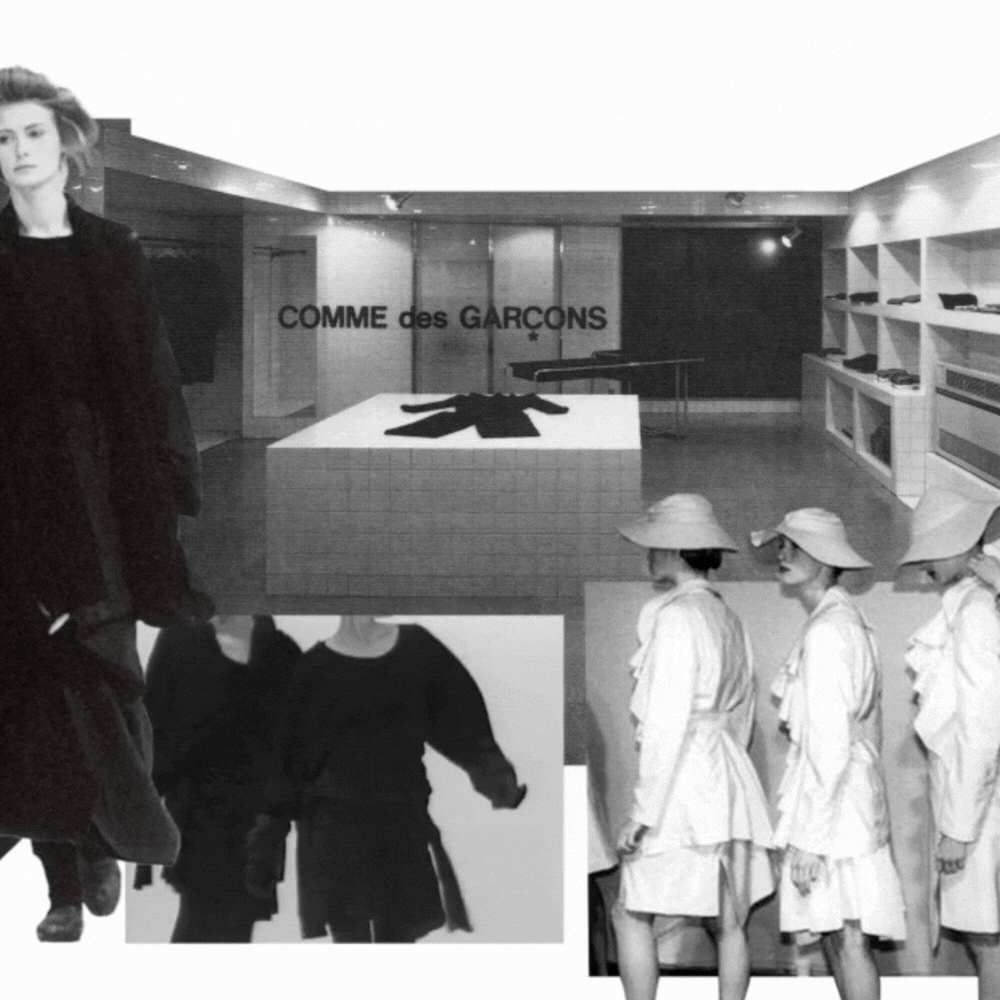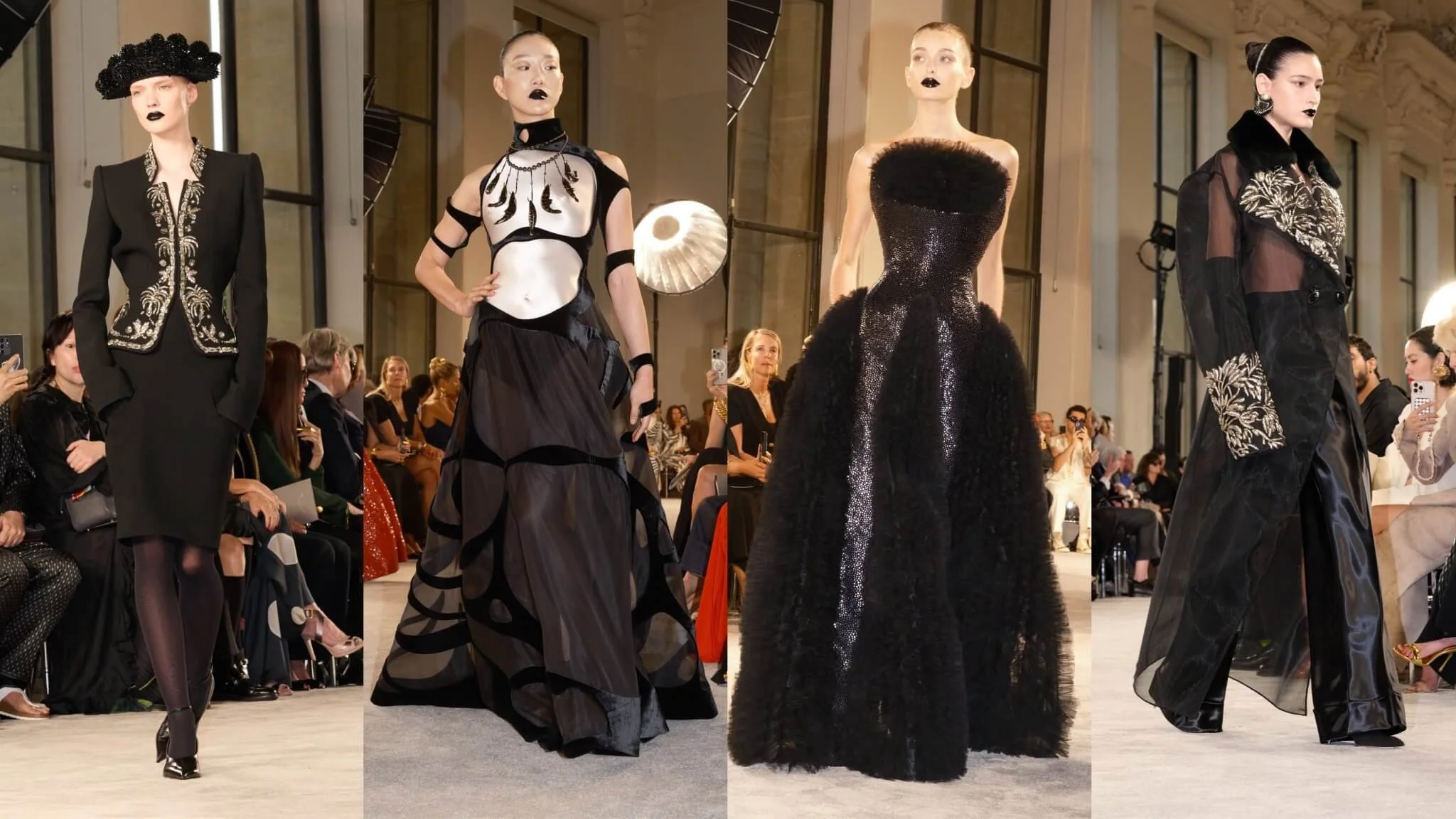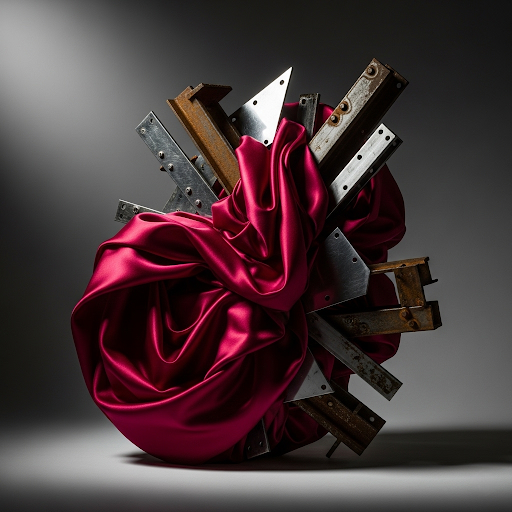The Architecture of Intent
A Critical Lexicon
This collection of studies is the intellectual architecture of Post-Luxury Conceptual Functional Art (PLCFA).
The true artistry of this Maison resides not in the finished form, but in the rigorous thinking that precedes it. These essays serve as the conceptual foundation for PLCFA, using a critical lens to interrogate cultural phenomena, art history, and consumer paradigms—analyzing everything from the ephemeral spectacle of luxury to the pure architectural rigor of abstract principles.
This is an invitation into the workshop of the mind. By sharing this process, we validate the necessity of a new category of value and invite you toward a well-considered life, one founded on true craft, uncompromising narrative, and durable meaning.
New to PLCFA? Begin with Essential Reading below.
Exploring a specific area? Navigate by category.

The Bag-Backed Security: How the LUXUS Fund Signals the Death of Old Luxury and the Rise of the Post-Luxury Era
The 21st century has borne witness to a silent, seismic shift in the semoiotics of value. Luxury, once the bastion of craftsmanship, has been systematically hollowed out, its cultural meaning evacuated and replaced by a cold, relentlessly quantitative logic. What was once an object of affection has been supplanted by the alternative asset. This transformation was a deliberate, institutional project to financialize desire and render the intangible liquid.
The logical endpoint of this process is the "Bag-Backed Security", exemplified by the emergence of LUXUS, an asset management firm backed by Christie's. This is the "Simulacrum of Luxury" made real. The definitive proof of this total financialization is that a $1 million fund returned 34% in 43 days—a speculative trade that proves the object's physical existence is now irrelevant.
This system creates a crisis of value—a "value monoculture" incapable of processing "un-smooth" objects. The model fails to see the intellectual critique of a Rei Kawakubo "Lumps and Bumps" dress or the earned endurance of a Carol Christian Poell Drip Sneaker.
The cultural crisis creates the intellectual void that our framework, Post-Luxury Conceptual Functional Art (PLCFA), is designed to answer. Where the LUXUS model offers ownership of an alienable commodity, PLCFA demands active stewardship of an inalienable possession.

Doris Salcedo: The Function of Suffering—Memory, Emotional Labor, and Political Witness in Post-Luxury Conceptual Art
The Post-Luxury paradigm begins with the recognition of a profound intellectual and ethical vacuum at the heart of contemporary culture, driven by the collapse of traditional luxury’s value equation. This study argues that the definition of function is too narrow—it fails to account for the essential human experiences, like collective memory and the reckoning with trauma, that constitute necessary human labor. This Function Gap is addressed by Doris Salcedo, whose objects possess a fierce utility by performing non-commodifiable, enduring social work. Her practice transforms art from a status symbol toward a ritual tool for collective conscience, shifting its role decisively from the logic of possession toward a logic of being. Read the full study to see how the work of this Philosophical Architect changes everything.

Rei Kawakubo and the Critique of Fashion as Conceptual Art
To categorize Rei Kawakubo as a mere "fashion designer" is a fundamental failure of language. Her life’s work is not a sequence of collections, but a sustained, totalizing critique delivered through the medium of the garment. This study traces her journey as a Philosophical Architect who relentlessly challenged the fashion system’s core tenets: the hollow worship of novelty, the arbitrary definitions of luxury, and the commodification of the human form. Through her radical 1982 "Destroy" collection, the conceptual warfare of the 1997 "Lumps and Bumps," and the creation of Dover Street Market, Kawakubo established the foundational anti-fashion lineage for the entire Post-Luxury sensibility. Her ultimate creation is an inhabitable universe where value is based on concept, function is defined by critique, and the only true object of affection is the one that forces intellectual engagement.

Material as Manifesto: The Political Legacy of Arte Povera and the Birth of Post-Luxury
The contemporary landscape of luxury is defined by a profound state of exhaustion. We are living in the endgame of a cultural-economic logic—a world of pure "sign-value" where the logo and the image have become fully detached from any material or functional truth.
This crisis of value, however, is not new. It is the mature, collapsing phase of a system whose nascent, corrupting influence was first identified and radically opposed over half a century ago. Emerging from the radical political atmosphere of 1960s Italy, the movement known as Arte Povera—literally "Poor Art"—was the first organized, philosophical, and material response to the colonization of culture by mass consumerism.
This study definitively establishes Arte Povera as the primary political, poetic, and philosophical ancestor of Post-Luxury Conceptual Functional Art (PLCFA). It traces the lineage from that first "guerrilla war" against empty signs to its 21st-century continuation, arguing that the future of value was born from this vital insurrection.

Systemic Stewardship and the Social Contract: The French Prime d'activité as the Material Condition for Post-Luxury Endurance
This analysis is a financial and moral reckoning for the luxury industry, definitively bridging abstract value critique with material policy economics. By dissecting the continuous revaluation of the French in-work benefit, the Prime d'activité (PàA), this study proves that the privileged, philosophical position of the "Aesthetics of Endurance"—the core of the Post-Luxury framework—is structurally and financially subsidized by the government’s costly mandate of Systemic Stewardship.
We use empirical data from the PàA’s massive €4.1 billion fiscal revaluation to quantify the State’s binding Macro-Stewardship contract. This intervention is shown to be a strategic investment in "human capital," protecting the entire system from the collapse of its low-wage labor base, or the "Missing Mass." The finding is unambiguous: the security and conceptual permanence of high-value art is utterly dependent on the stability and subsidized functional necessity of the precarious workforce. This work introduces an entirely new, non-negotiable risk metric for evaluating the long-term viability and moral integrity of the global luxury market.

The Custodian's Contract: From Institutional Critique to Systemic Stewardship
The advanced art institution is structurally sound but spiritually hollowed-out. The defining mode of engagement—Institutional Critique—has been fully absorbed and neutralized, resulting in a critical void. If the museum can no longer find its purpose in conflict, it must locate it in a new structural commitment.
This study argues for a definitive evolutionary shift: the Custodian’s Contract. This binding, comprehensive agreement is the necessary institutional response to the demands of "un-smooth" Post-Luxury Conceptual Functional Art (PLCFA). It provides the mechanism for the museum to graduate from passively performing critique to actively practicing custodianship, forcing it to make a choice: remain a passive Mirror reflecting a hollow culture, or become the foundational Mass that anchors the critical art of the future.

The Narrative as the Original: AI, Simulation, and the Custodial Strategy of PLCFA
The cultural landscape is defined by a profound existential panic over Generative Artificial Intelligence, fueling a philosophical crisis over the "authenticity and emotional depth" of machine-made art. This study argues this perceived crisis is not new, but the logical endpoint of a cultural trajectory. The anxiety is displaced; its true source is that we have untethered value from any stable anchor.
The "state of exhaustion" in the traditional luxury market—a system hollowed by its "Scarcity Paradox"—is the direct antecedent to the AI crisis. Both are symptoms of cultural exhaustion with simulation. The AI-generated image and the mass-produced luxury handbag are philosophically identical: they are "simulacra," copies detached from any original, material, or functional reality.
Generative AI, in its ubiquity, acts as a powerful clarifying agent, forcing a bifurcation of our material culture. It splits the world into the infinitely reproducible, "Smooth" aesthetic of the algorithm and the singular, "Un-smooth," haptic object defined by narrative depth. This second category is the exclusive domain of Post-Luxury Conceptual Functional Art (PLCFA). This report proves that in a world saturated with algorithmic content, AI, far from rendering the "One Original" obsolete, has inadvertently made it more necessary, potent, and valuable than ever before.

The Simulacrum of Luxury: A Guide to Jean Baudrillard's Critique of Consumer Society
The price is real, but the value is a perfect mirage. That feeling of emptiness you get from a world of flawless, frictionless luxury isn't your imagination; it's a diagnosis. The philosopher Jean Baudrillard gave it a name decades ago: the "desert of the real," a hyperreality where the copy now precedes the original. This study is your field guide to that desert. It weaponizes Baudrillard's most potent ideas- simulacra, sign value, hyperreality—to decode how luxury logos became empty containers and how influencer feeds learned to manufacture our desire. But this is more than a diagnosis; it’s an escape route. We reveal the antidote: a quiet resistance built on tangible function and symbolic exchange. This is the manual for finding an original in a world built on code.

Stressflation and Product Recalls: Why the 2025 Consumer Crisis Is Fueling the Secondhand Luxury Boom
The contemporary consumer landscape is defined by a profound, dual collapse. First, a pervasive economic anxiety—what this study defines as "Stressflation"—has unmoored itself from macroeconomic data, creating a deep and persistent loss of faith in the ephemeral promise of abstract monetary systems. Second, this crisis of the abstract is mirrored by a tangible crisis of the concrete: a recent spate of high-profile product recalls across food, cosmetics, and pharmaceuticals has shattered public trust in the safety and quality of the mass-produced, disposable goods that define modern life.
This study argues that these are not parallel events but two facets of a single cultural fracture, which has created a profound vacuum. This vacuum is now being filled by a powerful, consumer-driven counter-movement. As trust in ephemeral systems erodes, a new "Creed of Permanence" is emerging, and consumers are actively seeking refuge in tangible, durable, and authenticated assets. This analysis proves how this shift is the definitive force fueling the unprecedented boom in the secondhand luxury market, signaling a fundamental recalibration of value itself.

The Missing Mass: Gregory Sholette’s 'Dark Matter' and the Political Economy of Post-Luxury Conceptual Functional Art
Why does modern luxury feel so hollow? We have diagnosed a "state of exhaustion," a system hollowed out by its own paradoxes, where price is detached from reality and meaning has been systematically stripped away. This study argues that this emptiness is a direct consequence of luxury's structural dependency on what theorist Gregory Sholette calls "artistic dark matter."
This is the vast, unacknowledged surplus of creative labor, the subcultures, activists, and community artists, that the mainstream simultaneously depends on and renders invisible. The luxury industry, unable to generate its own creative fuel, survives by cannibalizing authenticity. We trace this pattern from the appropriation of punk and hip-hop to the cynical "poverty chic" of Balenciaga and the complex "re-legitimization" of Dapper Dan.
This process reduces culture to "bare art," a pure commodity. This report reframes Post-Luxury Conceptual Functional Art (PLCFA) not merely as an aesthetic shift, but as a vital political and economic counter-paradigm. It is the framework that shows how this "dark matter" can finally "brighten," codifying its inherent values of autonomy and narrative depth into a coherent system of resistance.

Hiroshi Fujiwara and the Architecture of Post-Luxury Influence
A groundbreaking analysis of Hiroshi Fujiwara as a cultural architect whose work transcends design to reveal a new blueprint for influence. This study, Hiroshi Fujiwara and the Architecture of Post-Luxury Influence, dissects how his career reframed value by replacing empire with intentionality, spectacle with discretion, and inheritance with earned authority. We propose that Fujiwara's Fragment Design lightning bolt functions not as a traditional logo but as a monogram of philosophy—a structural element in a new paradigm of Post-Luxury Conceptual Functional Art. This work is essential reading for anyone seeking to understand the unseen forces shaping contemporary culture.

The Secret Handshake: Deconstructing the Trump–Epstein “Best Friends Forever” Installation and the Hybrid Model of Covert Art Activism
The Secret Handshake (TSH) has engineered a tactical, post-luxury approach to political dissent that fundamentally redefines art's utility in the 21st century. Their Hybrid Model of Covert Art Activism (HMCAA) pivots away from the static artifact, instead weaponizing the entire sequence of events surrounding it: from clandestine creation and the use of ephemeral, faux-grand materials to the inevitable, documented conflict with authorities. In this paradigm, anonymity is not a retreat but a strategic asset that shields the message from partisan dismissal, while the state's intervention—such as the premature dismantling of the Best Friends Forever monument—becomes the final, most powerful act of the artwork itself. The art is not the sculpture, but the viral record of the state’s documented reaction. TSH’s work forces a critical re-evaluation: is this radical art, or a new, stealth form of political communication?
To understand the architecture of this repeatable model and its profound impact on activist methodology, continue reading the full study.

Robert Ebendorf: Found Objects, Philosophical Objects, and Post-Luxury Conceptual Functional Art
Robert Ebendorf is a pivotal figure whose lifelong practice defines Post-Luxury Conceptual Functional Art (P.L.C.F.A.). Operating as an alchemist of the overlooked, he challenges the traditional notion that artistic value must be derived from intrinsic material wealth. Ebendorf's ethos is to find "order and beauty out of chaos," transforming the discarded detritus of modern life—from rusted beer tabs to prosthetic eyes—into philosophical objects of profound personal and aesthetic worth. His work centers on Material as Story, elevating an object's ethical provenance and found history over its market price. By applying rigorous metalsmithing skill to non-traditional elements, Ebendorf’s functional jewelry acts as a powerful critique of consumption, making the act of wearing a piece a commitment to stewardship over ownership.
To understand the profound impact of this conceptual rebellion on contemporary craft, continue reading the full study.

The Paris Fashion Week Paradox: Why the 18-Collection Calendar Kills Creativity and Signals the Death of Traditional Luxury
The contemporary luxury fashion calendar, driven by the financial mandates of corporate oligopolies, has systematically dismantled the core value proposition of traditional luxury. Houses are now compelled to produce up to eighteen collections annually, a pace that directly eliminates the time required for artisanal precision and visionary design. This relentless acceleration transforms the designer into a high speed content generator and shifts the $25,000 couture piece from an enduring investment into stylistically obsolete marketing collateral within six months. This systemic failure finds its necessary antidote in Post-Luxury Conceptual Functional Art (P.L.C.F.A.), a new paradigm that rejects transient status appeal, placing value instead in enduring intellectual depth, narrative, and ethical alignment. The future of authentic high fashion resides in this seasonless, philosophical approach, restoring the garment as a significant object of cultural value.
To understand the full scope of this self destructive cycle and the necessary emergence of Post Luxury Conceptual Functional Art, continue reading the full study.

The New Avant-Garde: Deconstructing Status and Utility in the Age of Post-Luxury
In the realm of global commerce, an ancient contract has finally been broken.
For a century, the gilded façades of luxury promised permanence, rarity, and status through price. That promise has been hollowed out—by relentless scale, ethical opacity, and the exhaustion of the logo. We stand at a cultural inflection point where the question is no longer what does it cost? but what does it mean?
Into this vacuum emerges The New Avant-Garde: a powerful, polyphonic movement of global makers crafting Post-Luxury Conceptual Functional Art (P.L.C.F.A.). These are not commodities designed for disposal, but vessels of memory and gestures of permanence. They are objects that elevate story over material, connection over exclusivity, and authenticity over image.
This is the definitive study of a structural collapse and the quiet, profound transformation it has yielded—a look at the thinkers, artists, and ateliers, from Kyoto to Cape Town, who are insisting that the future of value lies not in scarcity, but in resonance, and that the ultimate luxury is a meaning made tangible.
